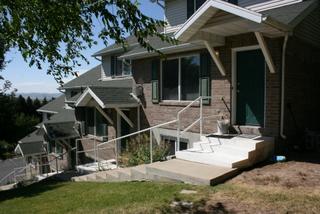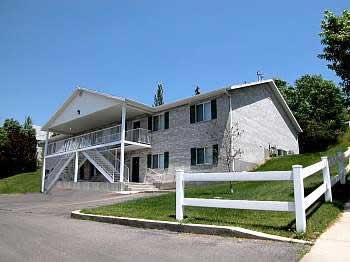HIGHLANDER

 Week of Oct. 31, 2022 Utah State University, Logan, Utah
Week of Oct. 31, 2022 Utah State University, Logan, Utah


 Week of Oct. 31, 2022 Utah State University, Logan, Utah
Week of Oct. 31, 2022 Utah State University, Logan, Utah
Rock music filtered through the speakers and mixed with the sound of bicycle wheels turning and the clank of various tools at Aggie Blue Bikes, Utah State University’s bike shop.
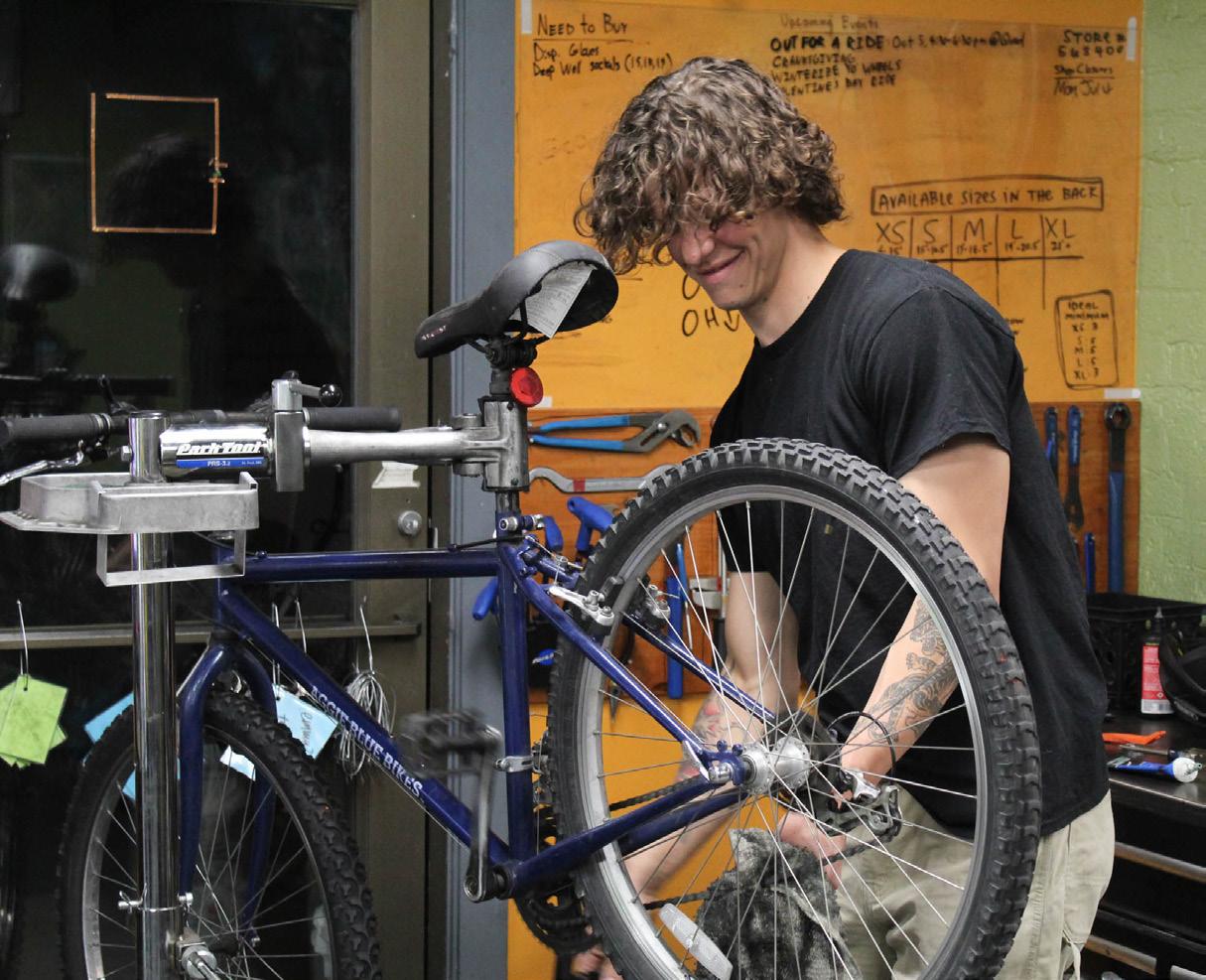
Founded in 2005, Aggie Blue Bikes is the heart of the campus biking community and welcomes students wanting to get involved in all things bicycling. They provide bicycle educa tion; students can bring in their own bike and be taught how to fix it.
Avery Cronyn, a student at USU, started working as a mechanic four years ago and has been the program coordinator since July. He said that everyone is welcome to stop by, expe rienced biker or not.
“There’s no stupid questions,” Cronyn said. “We’re all about trying to get people on bikes and feeling more comfortable. We try to provide a lot of opportunities for people who might not feel comfortable breaking into the biking industry, whether that’s riding bikes, racing bikes, or fixing bikes, just based on who’s already in the industry.”
Biking is a predominantly white sport with mostly male riders and mechan ics, he said.
“If we can try to create an environ ment here that’s different from that — hopefully more welcoming to people who don’t feel like they fit into that — then hopefully we can start to diver sify the sport and the lifestyle,” Cronyn said.
Aggie Blue Bikes currently has seven AmeriCorps paid volunteers. Cronyn said that many volunteers didn’t start with any bike maintenance experience but are now proficient mechanics.
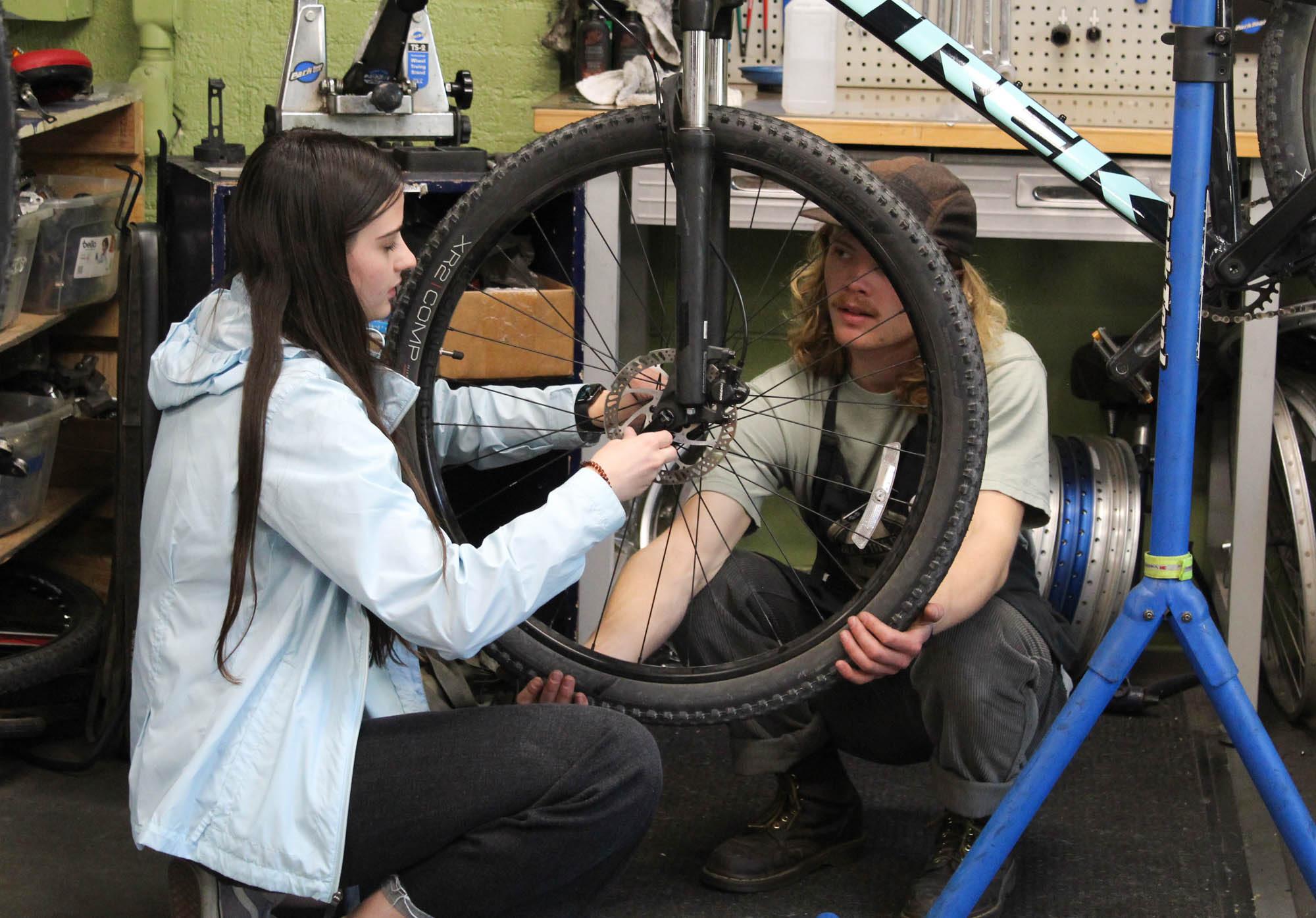
The shop provides long-term bike rentals for free to students. It is a student-fee funded program that costs $2.75 per student, per semester. Those want ing to rent are able to do so at no additional cost.
“On the individual level, I think it’s important that everybody has access to transportation,” Cronyn said. “Logan is small, but it can also feel really big, and on a greater organizational level, it just fits in with our goals.”
Currently, over 200 three-month rental bikes are checked out, and roughly 300 students a month have used the tools and maintenance services pro vided by Aggie Blue Bikes.
Cronyn said sustainability has become a main focus for USU, and they are working toward car bon-neutrality by 2050.
According to the UCLA transportation department,
a moderate increase in commuting via bicycle saves 6 mil lion to 14 million tons of carbon dioxide and 700 million to 1.6 billion gallons of fuel.
Aggie Blue Bikes is hosting an upcoming event called Cranksgiving in November. Cronyn described the event as an alleycat race, a type of informal bike race meant to en gage the local cycling community. Using bikes with bags
on the handles, participants will stop at different grocery stores in the valley and ask incoming shoppers to pick up an extra item or two to donate to the Cache Community Food Pantry.
Aggie Blue Bikes also works with other programs and organizations around town. Bikes are currently being prepared to be donated to Cache Refugee and Immigrant Connection. Aggie Blue Bikes works with CAPSA and Athletics United by donating bikes to those who need them and helping people integrate into the community through sports. Cronyn said they are looking for volunteers to help with the Cranksgiv ing event. To get involved with Aggie Blue Bikes, direct message them on Instagram @usuaggiebluebikes, send an email to aggiebluebikes@usu.edu or stop by their location on campus between the Fieldhouse and the Mili tary Science building.
Beyond campus, Logan is a commu nity with multiple services available for beginning and seasoned bicyclers. Sunrise Cyclery, owned by Jeff Keller, has been open since 1981. Surround ed by bike bags, helmets and racks upon racks of bicycles, Keller can be found discussing bike maintenance with local cyclists while the song “Soul Man” plays in the background. Sunrise is a family-friendly bike shop with a welcoming environment, Keller said. He chose the name because he believes there is no better way to greet the day than with a bike ride.
Along with bikes, the shop sells biking gear and equipment. Keller’s advice to new bikers would be to invest in a good quality bike and to do the prop er research before making the purchase.
Keller said that riding a bike is the most effective and efficient mode of transportation society has.
“You look how far you can go on a bicycle — I used to say that you could go 1,000 miles on a bicycle — and the energy equivalent is one gallon of gas in a car,” Keller said. “On a bike, you could ride to Salt Lake on a gallon of Welch’s grape juice and a bagel, you know?”
Keller co-founded the annual Logan to Jackson bike race known as LoToJa, which is the longest distance amateur bike race in the United States at 206 miles. LoToJa just celebrated its forty-year an niversary, and tens of thousands of bikers from all 50 states and several countries have participated since its beginning in 1983.
Other full service bike shops in Logan include Joy Ride Bicycles and Al’s Sporting Goods.
Joy Ride, managed by Jeff Bruce, has been open since 2001. The shop has 15 employees, 12 of
which are students at USU. Joy Ride sells bikes and offers maintenance. They sponsor the annual local bike races Cache Valley Century, Cache Gran Fondo and the Boy Scouts of America’s Bike the Bear event.

Zackary Hansen, the bike repair shop manager at Al’s Sporting Goods, has worked there for six years. Bike services at Al’s include bike maintenance, rentals and sales. There are 15 bike shop employees, 11 of which are USU students.
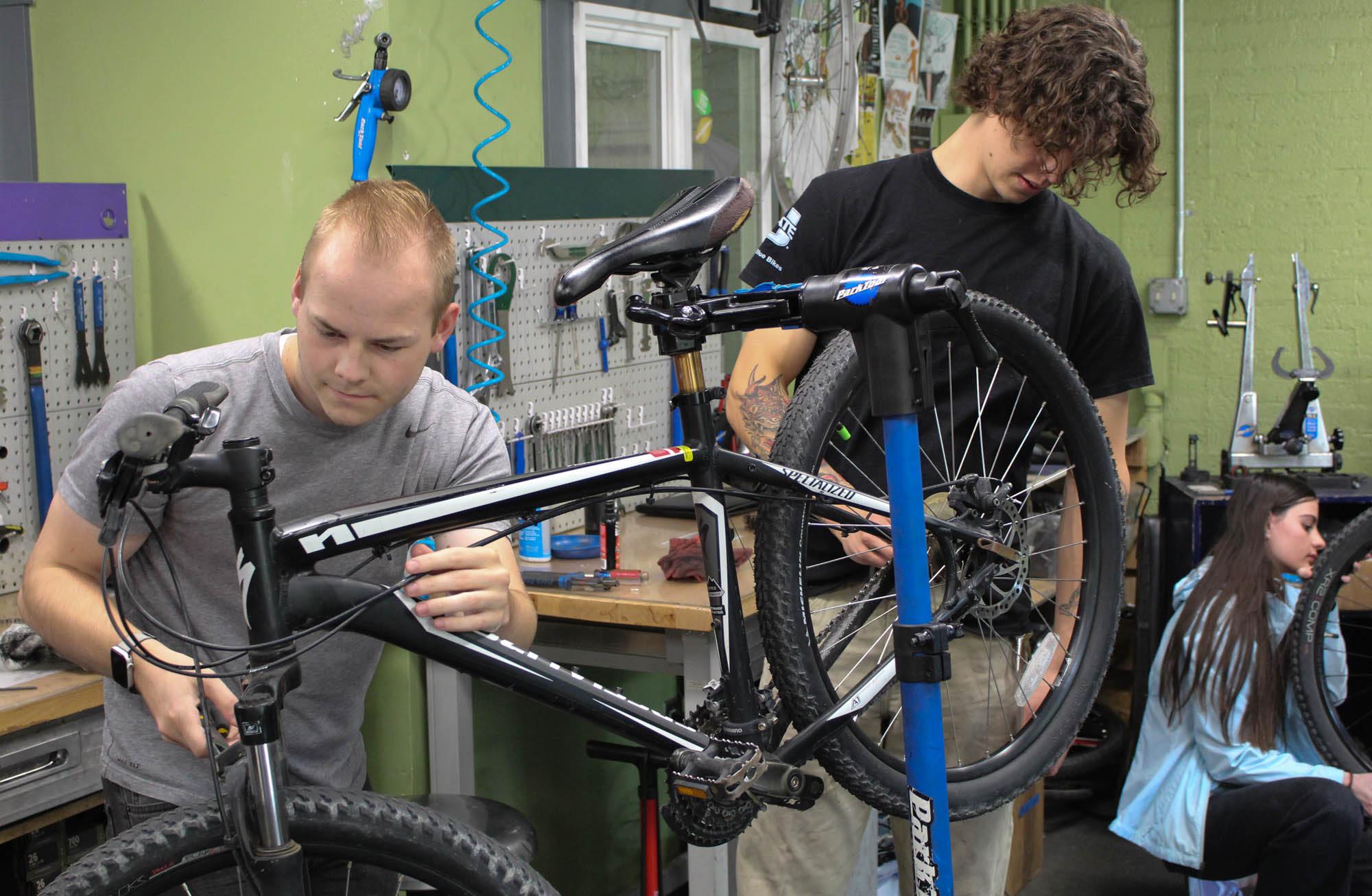
Hansen said he loves biking because it’s cost-effective and a “green” lifestyle to live. “Take it easy and have fun,” Hansen said. “Find what you love and go for it.”
Al’s sponsors the Logan Race Club, a local biking club that meets weekly on Tuesdays for night rides. Like Joy Ride, they spon sor local races, including the Cache Valley Century and the Cache Gran Fondo. They provide mechanic stands to be of service during the races.
SPEEDMountain, a shop specializing in mountain biking, opened in Bear Lake in 2011 and relocated to Logan in 2016. It transitioned from mountain bike rentals to a full-service shop.
The shop is owned by Dave Jensen and managed by Aaron Mecham. Mecham grew up in Cache Valley and has been mountain
biking since he was a child.
“I’m passionate about biking because when you’re sixteen, you feel like you gain all this freedom when you get your license. Then you realize you have to pay for insurance and gas,” Mecham said. “So there are nights where you just have to say, ‘OK, I’m not go ing anywhere because I’m not paying $5 per gallon.’ But you don’t get that with a bike. With a bike, you ride until you’re hungry, you eat, then you’re good to go again.”
According to a study done by the Institu tion of Transportation Engineers, biking saves 3¢ -5¢ per mile in energy costs, 1¢ -12¢ per mile in air pollution costs and 2¢ -5¢ per mile in noise pollution.
SPEEDMountain operates exclusively by appointment. To schedule a consultation, call ahead at 435-535-1113 or email aar on@speedmountain.com.
Mecham said new bikers should take it slow, start out small and be patient.
“You are forced to pay attention to what’s going on in front of you and around you,” Mecham said. “You can’t think about all the other things you have to do, because that’s when you crash. It’s a very meditative state of mind.”
Utah is ranked #10 for best biking states in the U.S. Listed below are the most popu
lar mountain biking trails in Cache Valley, along with their difficulty level:
200 South Street Trail - easy
Bonneville Shoreline Trail - easy
Jardine Juniper - moderate
Green Canyon - moderate
Stump Hollow - moderate
Logan Peak Trail - moderate
Ricks Canyon - moderate
Herd Hollow - moderate
Spring Hollow Trail - hard
Smithfield Canyon Trail - hard
David Zook, Cache County executive elected last January, discovered a concern amongst Cache County citizens regarding open spaces.
To solve this problem, he worked with other leaders in the county to create a proposal for an open space bond, which is included on the upcoming election ballot as Proposition 1.
A pamphlet distributed by the proposal committee stated that, if passed, the funds will be spent to “protect scenic vistas, preserve open lands near valley gateways, add trails and trail connectivity, and maintain agriculture, waterways and wildlife habitat.”
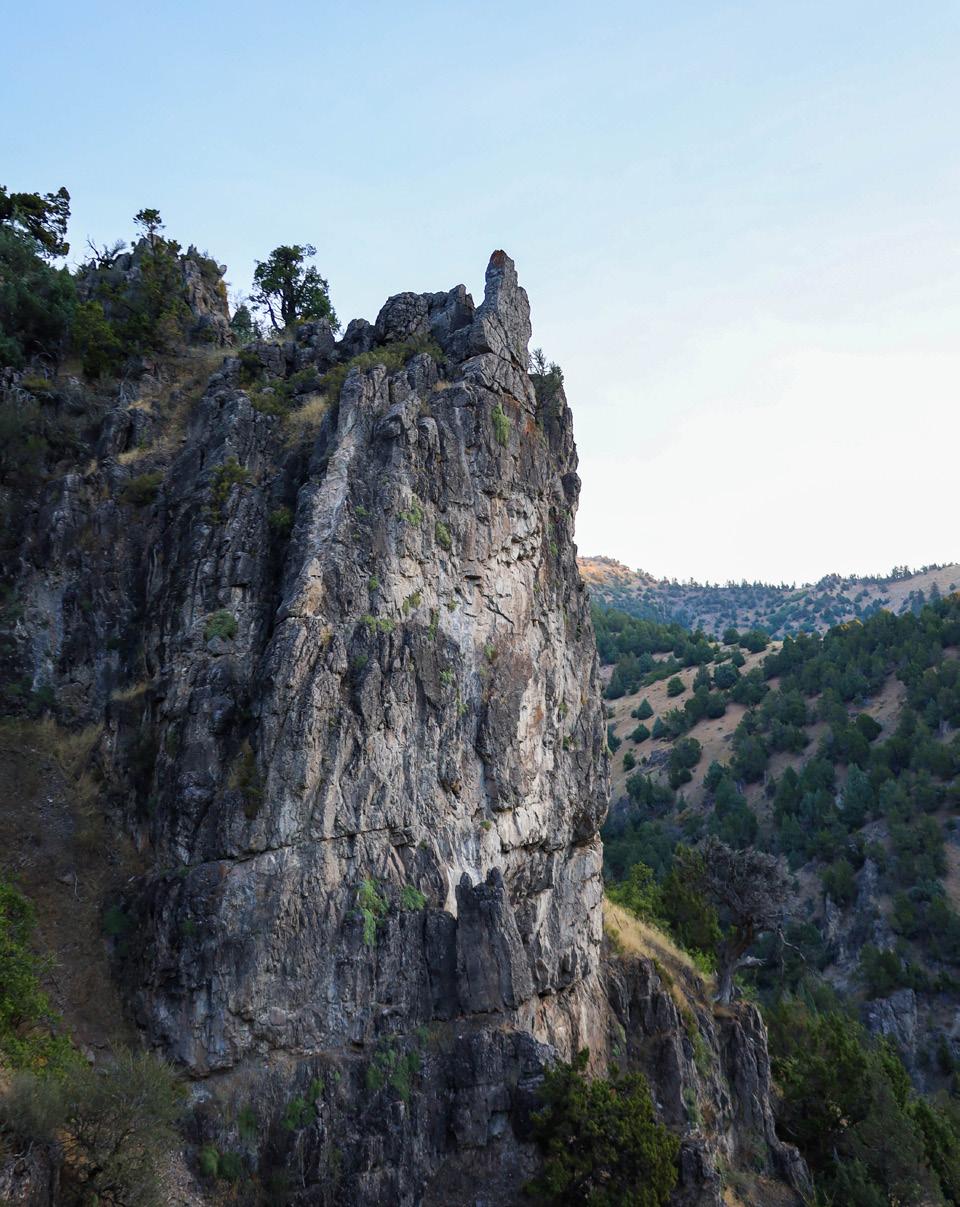

The pamphlet also shared that the average household would pay “about a milkshake a month,” or $2.24 for 20 years. The total bond will be $20 million. If passed, a county board will be created to work with landowners who voluntarily choose to sell land or easements.
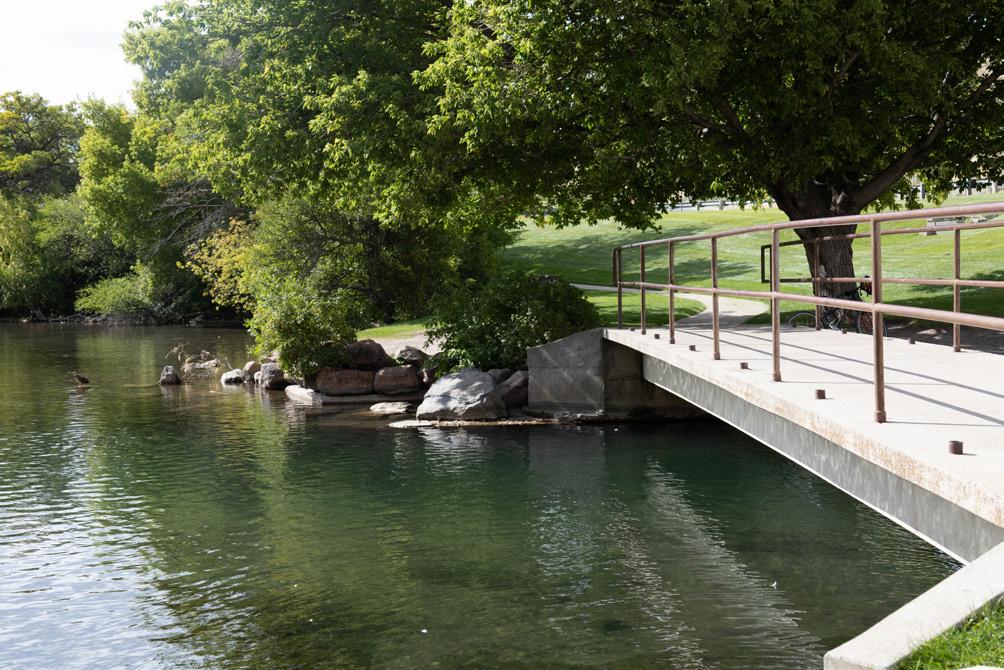
“It says in the proposition that it has to be voluntary,” Zook said. “So none of these funds would ever be used to take someone’s property and force it to stay open. These funds would only be used for properties where the owner voluntarily applied and competed for the funds.”
The individuals who designed the proposal served on a committee known as the Cache County Open Space Advocacy Committee. The committee consisted of citizens of Cache County who are passionate about open spaces, such as fishers, hunters, farmers, skiers and people who enjoy spending time outdoors.
Cache County has never had a bond passed for open spaces, but Zook said that this is not the first time such a proposal has been attempted in the county.
“Some residents in Cache County in 2008 tried to put something like this on the ballot,” Zook said. “Unfortu nately, 2008 was a pretty volatile year, I would say, due to the financial crisis that happened in 2008, and the ballot initiative didn’t pass that year. We’re hoping that our voters realize the opportunities that we’ve lost over the last 14 years because we didn’t have an open space bond in place. That’s something I think about. I think about how much land we could have preserved and how many
projects we could have completed if we had passed this back in 2008, 14 years ago.”
Zook, along with other citizens, still wanted to do some thing to protect the open spaces of Cache County.
“We have such beautiful open space with the mountains and the farms and the rivers, and those create spaces for agriculture, for wildlife, for recreation, and we love those parts of Cache Valley,” Zook said. “That’s one of the things that makes Cache Valley great is our beautiful open space.”
The current proposition began development in 2017.
“We were planning to try to put this on the ballot in 2020 and then in early 2020 the pandemic broke out, and we realized that we probably should wait till another year, a different year, to try to put it on the ballot,” Zook said. “So we did that, we put the effort on pause in 2020 and then last year in 2021, after I got elected, I started talking to my staff about it.”
Eric Eliason, a member of the open space committee, said the project is important to him.
“I’ve always loved coming into the valley and the feel ing you have when you come here, that ‘Yay, I’m back home,’” Eliason said over the phone. “The open space that you see as you arrive in the valley, there’s something very unique about it. We see Ogden area and Salt Lake area just fill up completely and in the end, at some point you either have to do this or let it go that way because it will develop completely.”
He said this proposal is a way for people and landown ers to choose open spaces.
Eliason said the mental health benefits of nature and
open spaces improves well-being. This idea was support ed by a survey conducted by Courtney Flint, a professor in the department of environment and society at Utah State University.
Results from the survey, as well as additional information about other surveys and Proposition 1, can be found at cacheopenspace.org.
LeiLoni De Pew is a freshman studying theatre education and ASL. When she is not writing, she enjoys watching and researching Disney and participating in theatre productions.
— A02384515@usu.edu
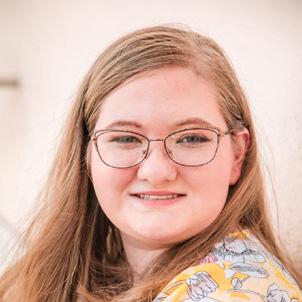
With around 200 students choosing cycling as their preferred method of transport, bikers’ safety is a concern on Utah State University’s campus.
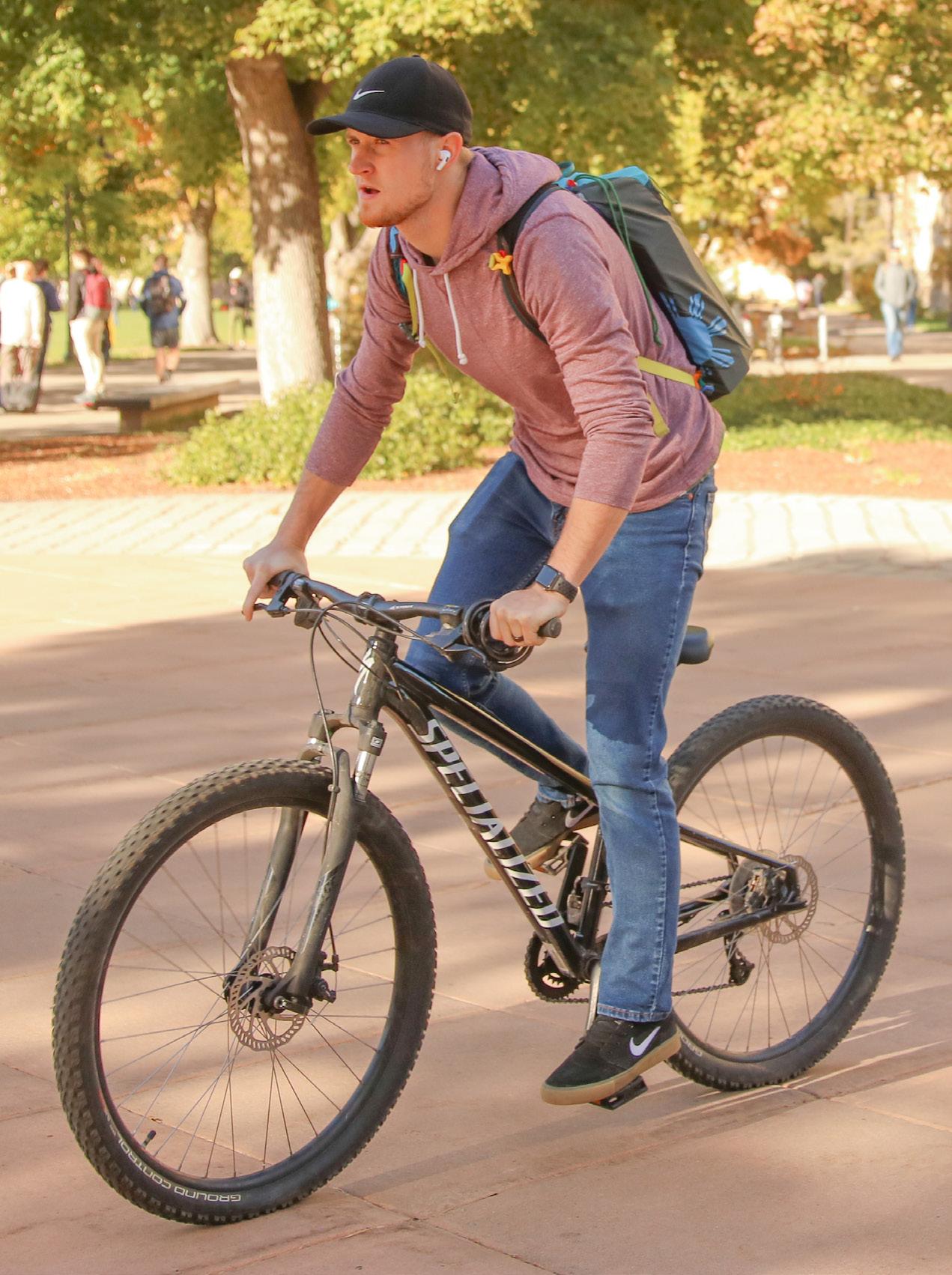
USU has been ranked a gold-level bicycle-friendly uni versity by The League of American Bicyclists, an award given to institutions that promote safe and accessible biking.
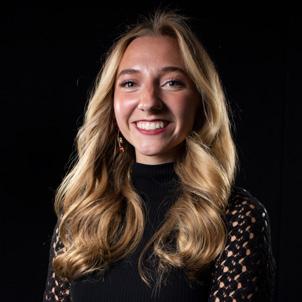
However, USU student Kiersten McDonald said that USU is still not doing enough.
“I’ve almost gotten hit countless times by cars,” McDon ald said. “And I think it’s just a really big issue because bikers aren’t safe on campus, even though the university markets it as a bike-safe campus.”
McDonald said she isn’t the only student who feels this way.
“I work at Aggie Blue Bikes. I’m kind of constantly talking to people who are riding bikes on campus,”
McDonald said. “One of my friends came into the shop and said she was riding on the new bike boulevard and almost got hit by a car and thought that bikes were sup posed to be the primary users of that road.”
McDonald decided it was time to take action, and she created an Instagram account called @bikingissues.
McDonald posts pictures of biking lanes being blocked by construction and parked cars, faded paint on bike lanes and more. In one of her recent posts, McDonald commented on USU’s overfilled bike racks.
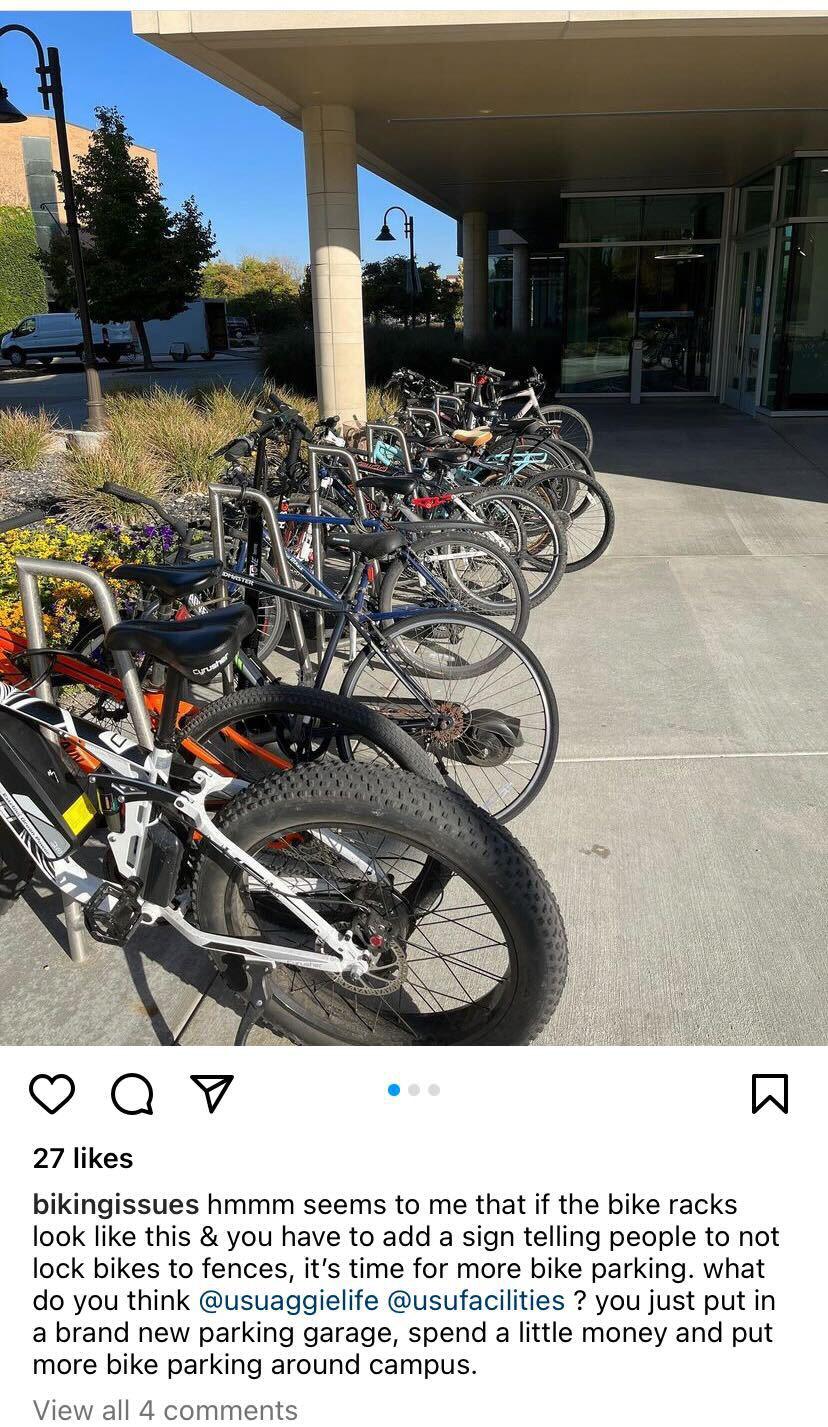
“Hmmm, it seems to me that if the bike racks look like this & you have to add a sign telling people to not lock bikes to fences, it’s time for more bike parking,” the post read. “What do you think @usuaggielife @usufacilities?
You just put in a brand new parking garage, spend a little money and put more bike parking around campus.” Nolan Sigler, an employee at Aggie Blue Bikes, agreed that bike parking is “tricky” in some areas on campus.
“It’s always hard to find a spot,” Sigler said.
Sigler said he supports McDonald’s Instagram page.
“I think that if anything, it’s a good thing because it’s kind of a voice for bicyclists,” Sigler said. “Especially in the city where infrastructure is centered around cars versus bikes.”
USU’s campus isn’t the only place in Logan facing backlash for the lack of cycling infrastructure.
“I’ve seen countless cars just parked in the bike lane and I’m like, ‘OK, now I have to go into the car lane, and I’m afraid that that car is not going to see me,’” McDonald said. “Around town only a few of those roads actually have bike lanes; a lot of them just have nothing. So bikers just have to ride on the side of the road and hope that cars see them. And especially the busy roads like Main Street and 400 North — they are basically impossible to bike on. They’re so dangerous.”
McDonald and Sigler said they have ideas of how to make USU and Cache County safer for biking. Sigler said there should be more bike lanes on roads and around campus.
“I think bike lanes are better than shared roads,” Sigler said.
McDonald said the university should “work with the people who are actually riding bikes on campus.”
“All that USU Facilities did was put new markers on the road. I don’t think any cars would have known that it is actually a bike boulevard or anything. There’s no signage or education for cars,” McDonald said. “And I don’t think USU Facilities has coordinated with anybody who actually rides a bike on campus.”
— alivia.hadfield@usu.edu
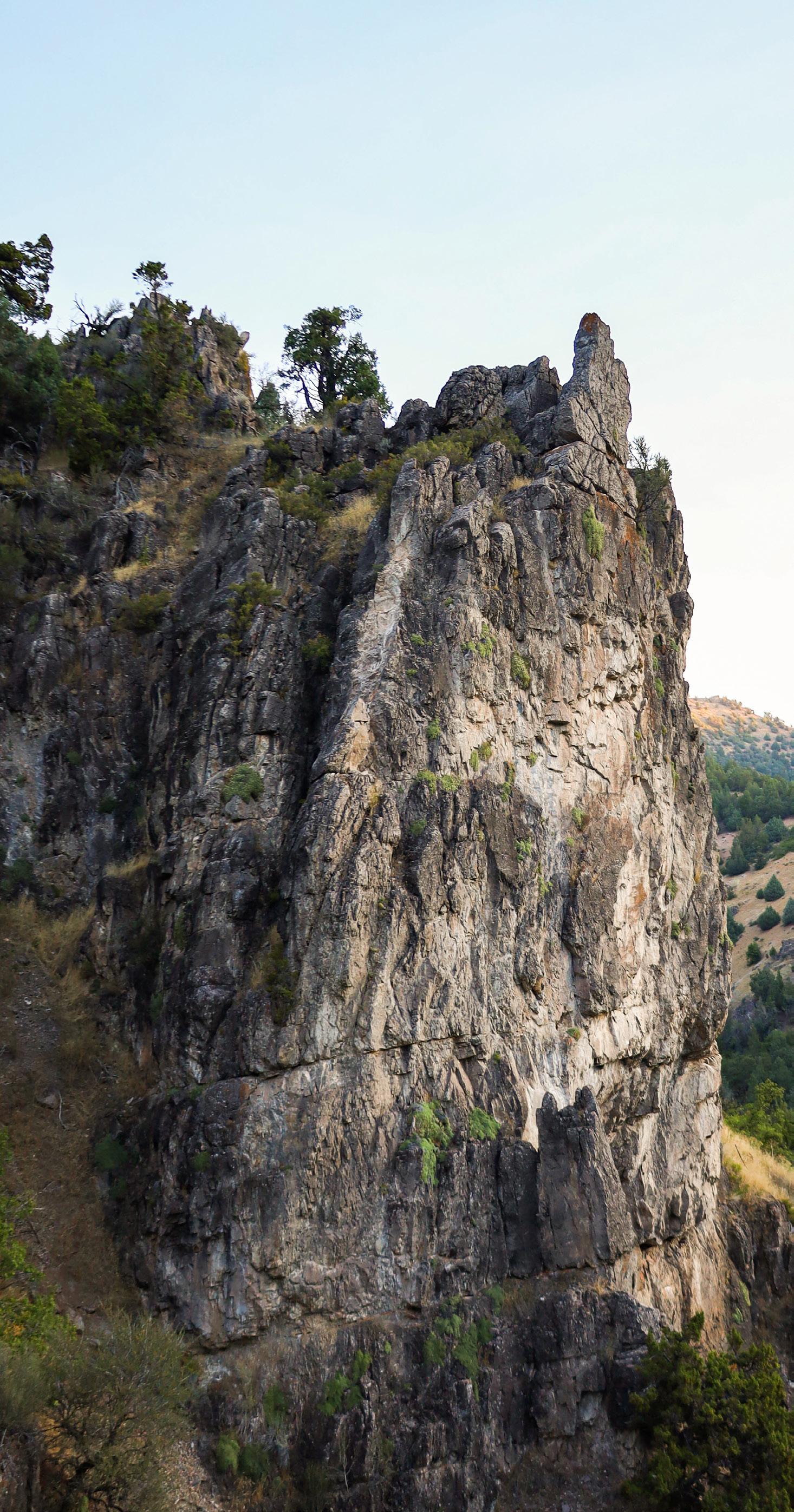

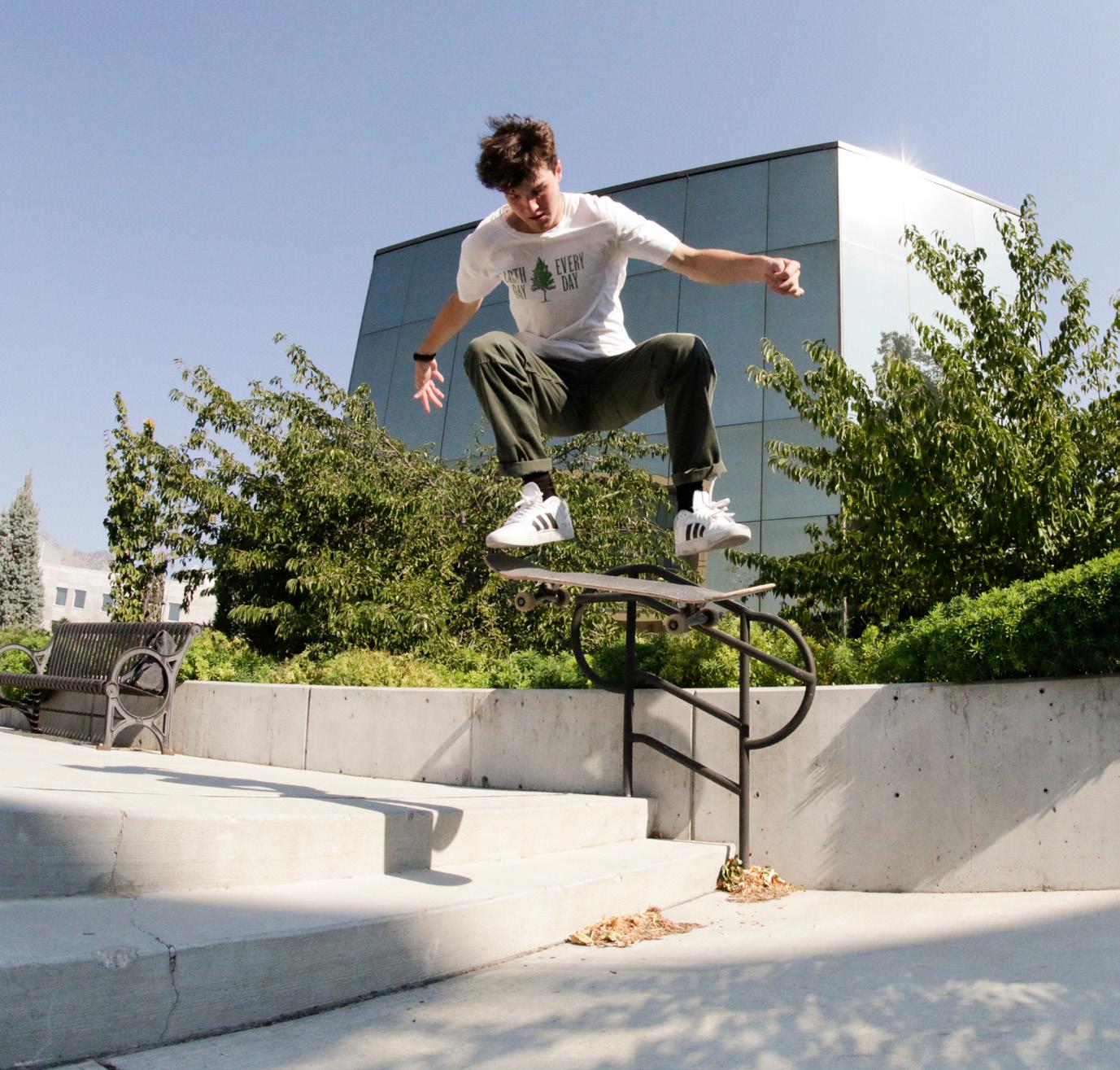
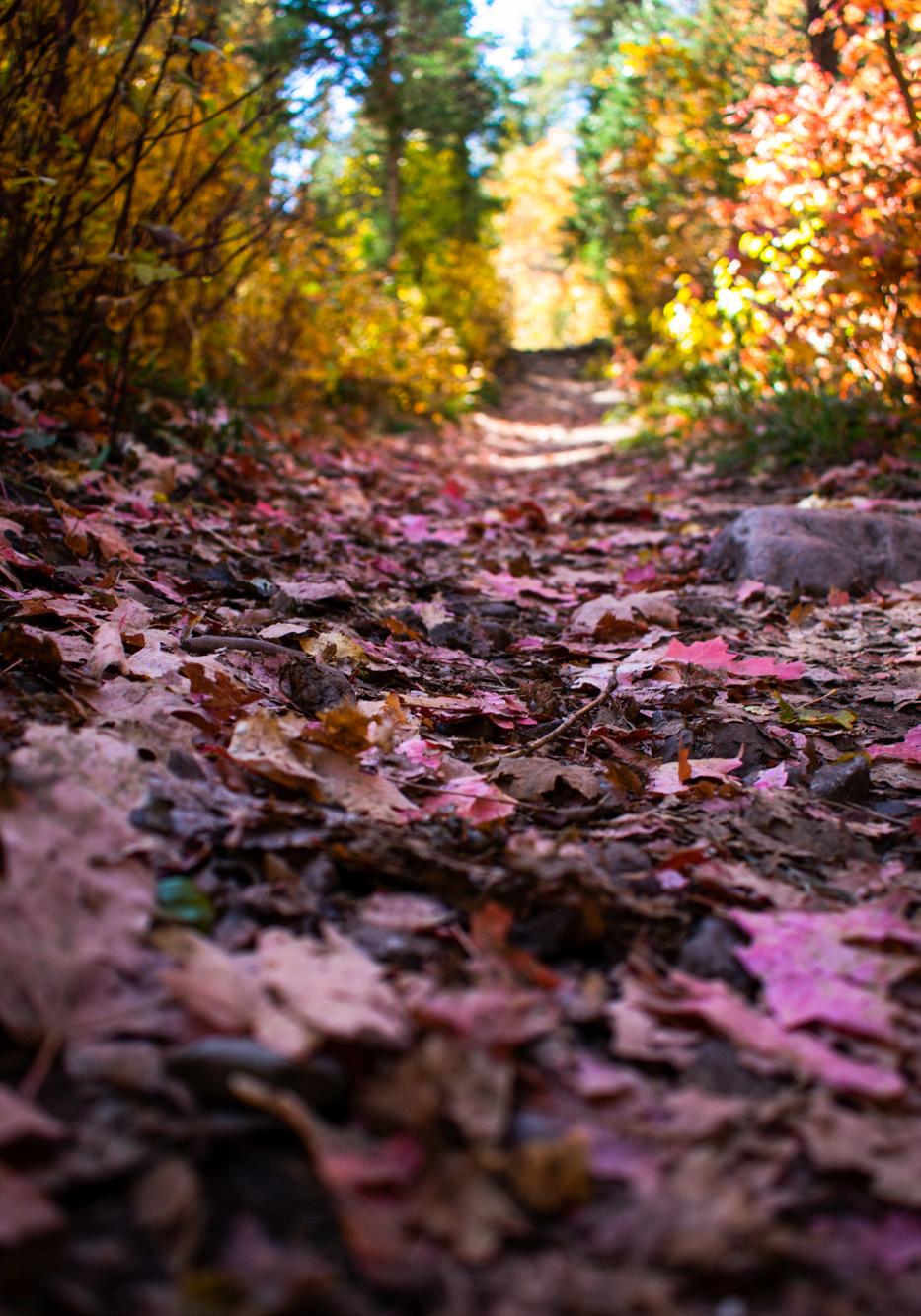

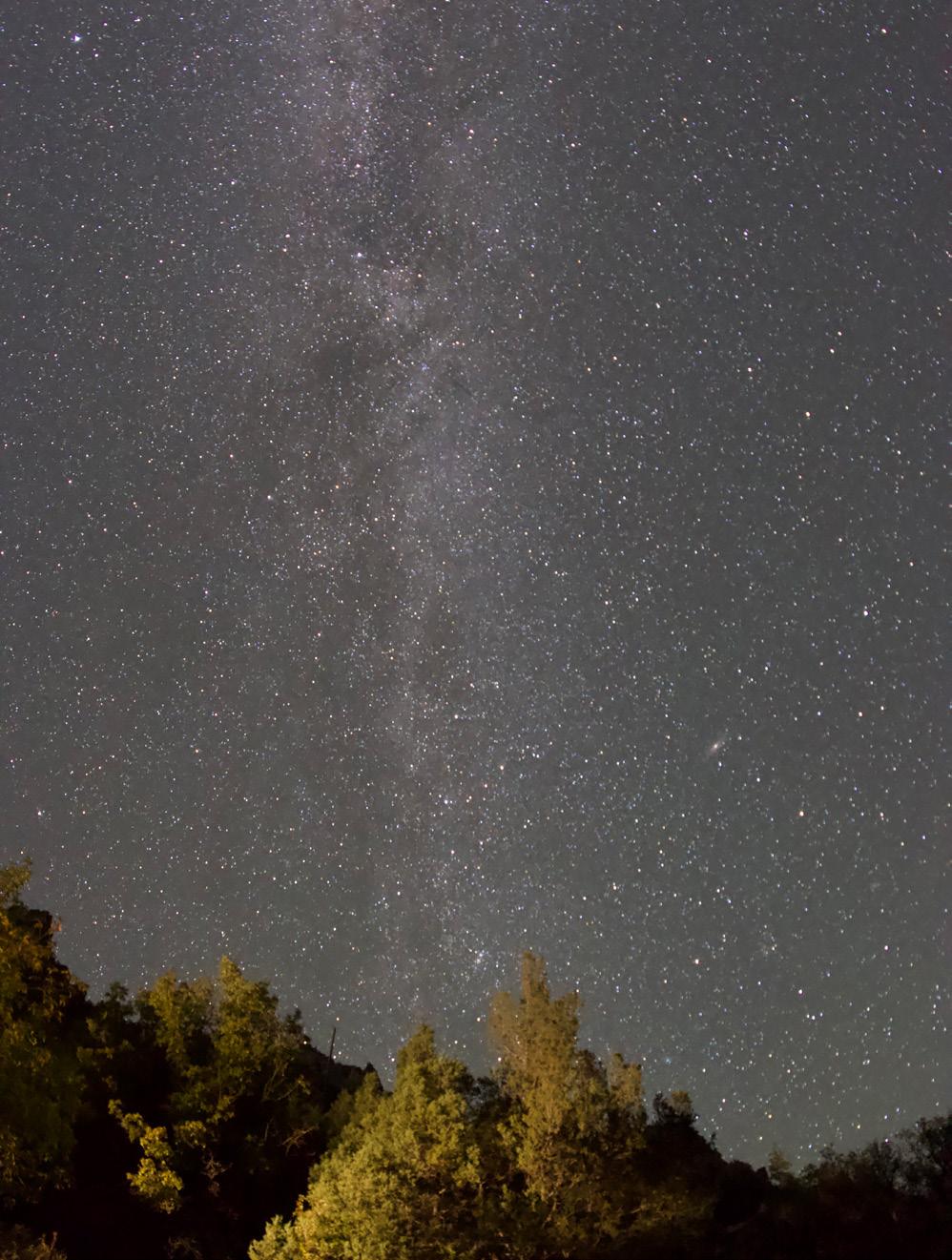
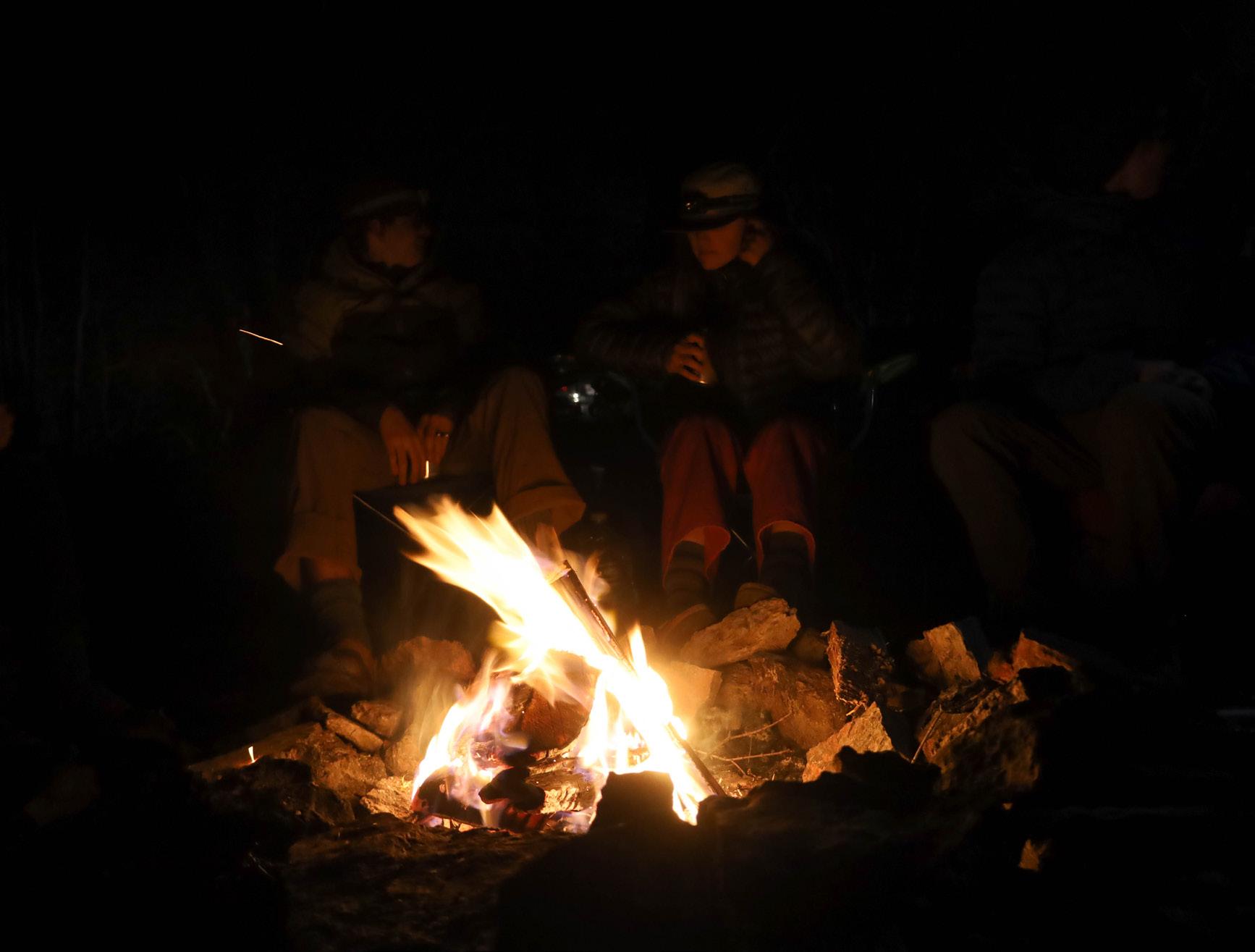
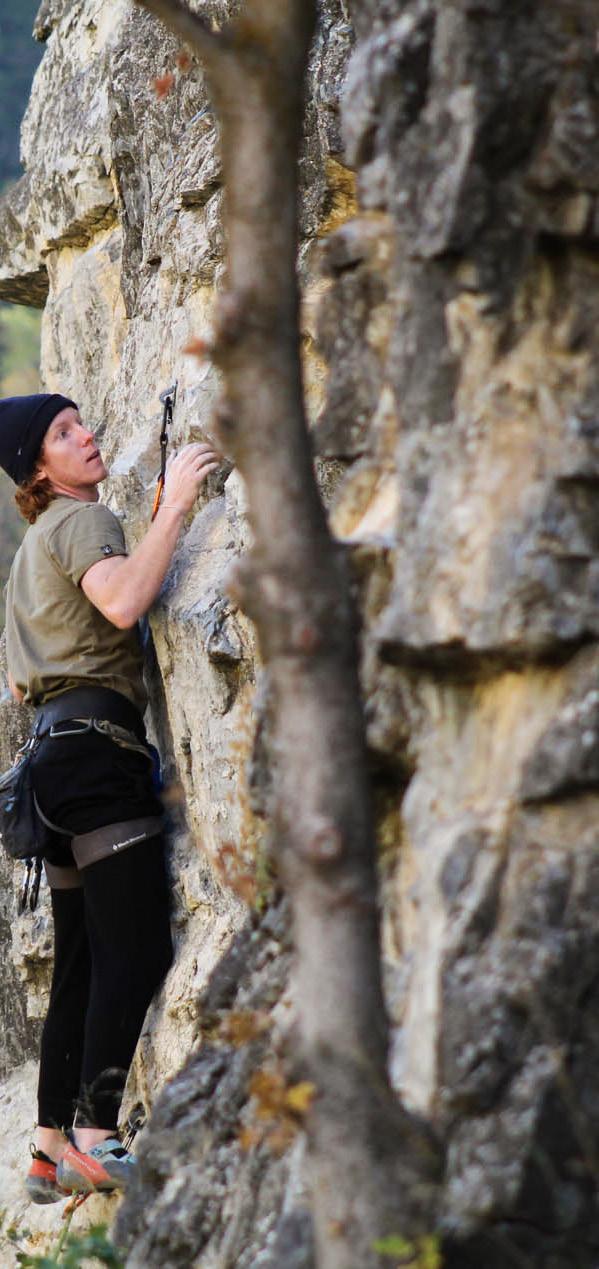
Professors and students at Utah State University have been researching climate change and its effects. Graduate student Jeffrey Perala-Dewey studied the impacts of snowmelt on particle pollutants in the atmosphere in Alaska.
“I study the fate and transport of certain environmental pollutants, specifically the ones that travel in the atmo sphere,” Perala-Dewey said.
Perala-Dewey is a Ph.D. student in the chemistry depart ment. He became interested in environmental chemistry when he met Dr. Kimberly Hageman, a professor in the biochemistry department at USU who also participated in the research at Toolik Lake, Alaska.
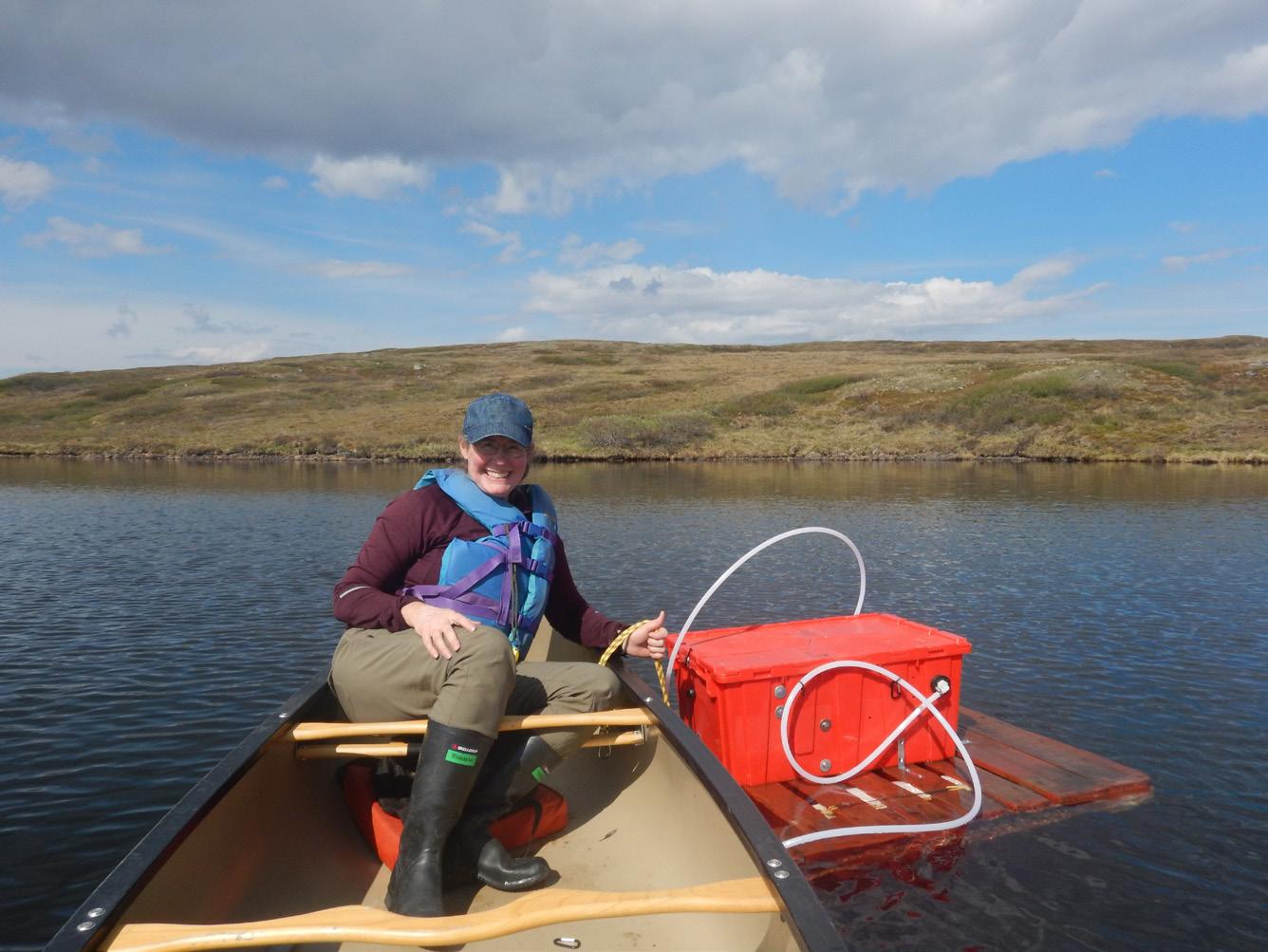
“The type of pollutants that we study in our research group are typically man-made,” Hageman said. “They’re chemicals that we produce and use. They don’t break down very easily, and that allows them to stick around for a long time.”
When released into the atmosphere, the chemicals travel further north or south until they make it to the polar regions.
“Things that aren’t used anywhere near the Arctic or the Antarctic ultimately end up there because of this effect of progressively traveling further and further from where they were used,” Perala-Dewey said. “That’s the premise of why we’re studying certain pollutants up in the Arctic.”
The researchers looked at certain flame-retardant compounds that are added to furniture to decrease their flammability.
“They have a wide variety of problems associated with them,” Perala-Dewey said. “They pose some level of toxic ity to humans and wildlife.”
Because of the significantly lower temperatures in the polar regions, the particle pollutants and chemicals end up frozen in the Arctic snowpack.
“There are several classes of chemicals whose fate in the environment is dependent on the temperature,” Hageman said. “When it’s warm, they volatize, and when it’s cold, they condense.”
The project had its first season in 2019. The research has yet to reach a conclusion.
“Part of the purpose of this study was to see if, as the snow and ice melted, that it released some of these chem icals,” Hageman said. “We hypothesize that they accumu late all winter long and, in the spring, when everything melts very quickly, it releases them.”
The team said they think global warming will play a large role in their findings, because of the unnaturally warmer temperatures in typically colder regions.
“Changes in temperature will certainly have an effect,” Hageman said. “These contaminants accumulate in snow pack and ice, so if the snow and ice melt earlier, that’s going to have changes on their behavior.”
Samantha Benovitz, a senior studying geology at USU, conducts research in the Hageman Lab and has helped Perala-Dewey process samples from Toolik Lake. A PAH, or polycyclic aromatic hydrocarbon, is a pollutant created when coal, wood, oil or gas is burnt.
“Their research is giving insight into the transport, deposition, and behav ior of PAHs and other pollutants,” Benovitz said in a virtual interview.
“It will be beneficial to know how these pollutants interact with fragile ecosystems, like Toolik Lake in Alas ka.”
Along with his research in Alaska, Perala-Dewey has worked on several other studies, including one concern ing the sediments in the Great Salt Lake and another that looked at how similar compounds move from urban areas into the alpine wilderness.
Patrick Belmont, a professor in watershed sciences at USU, performs research on climate change. His areas of expertise include water quality and quantity, ecosystem health, environ mental science and more.
Belmont has studied the effects of wildfires on the climate. He also did research examining historical trends in snowpack and how more recent changes affect ski resorts in Utah.
“There isn’t really much that we do in the College of Nat ural Resources that isn’t related to climate change at this point,” Belmont said. “It really is at the core of everything that we’re studying.”
Belmont said that watershed sciences are important in understanding climate change because water resources are critical to the economy and recreation.
“Here in Utah, we’re one of the driest states in the coun try,” Belmont said, “and we need to make sure that we’re using the little bit of water we have for the best uses.”
The Department of Watershed Sciences at USU works to link the hydrologic system to other environmental concerns.
“We have to be looking at these problems within the context of the whole system,” Belmont said. “I think look ing at them as integrated parts of the same problem is a useful way to do it.”
Belmont, Benovitz and other scientists at USU are con cerned about the severity of Utah’s drought.
“The hotter we let it get, the more severe and pervasive droughts there are,” Belmont said. “It’s just a question of how bad we want to let it get. It’s completely in our own control. The last couple of years have been the hottest years on record in Logan.”
Benovitz said that seasons are increasingly unpredict able, and Utah has been experiencing summer heat waves, decreased snowfall and major droughts across the state.
This increase in heat can be detrimental to wildlife that has not adapted to higher temperatures.
“One of the common misconceptions that I see is that we’re going to solve all of this with just more science and engineering and that there’s going to be some silver bullet and it’ll all be okay,” Belmont said. “That’s gotten us really far down the road into this problem. Science and
engineering are absolutely important, but I think we have all the science and engineering we need. We need to be implementing it.”
According to Benovitz, individuals can make a difference in the climate change issue, no matter how large it may seem.
“Thinking about how to reduce your overall carbon footprint and environmental impact doesn’t have to be complicated,” Benovitz said. “Just making a commitment to always bring reusable bags to the grocery store and re duce the number of single-use plastics you use can make a difference.”
Belmont agreed that individuals can initiate change.
“We need a bit of a shift in how we’re accounting for costs and benefits, and we need a shift in how people are thinking about their values,” Belmont said.
According to Belmont, people should be concerned about how the environmental choices made right now will negatively affect future generations if the problem is not solved.
“I have a 12-year-old daughter,” Belmont said. “And I think about the costs that are accumulating on her future. And that’s not fair.”
Belmont quoted the 19th-century poet Ralph Waldo Emerson’s proverb, “We do not inherit the Earth from our ancestors; we borrow it from our children.”
Belmont is worried about the future, but he is also hopeful about the direction that the economy is headed in environmentally.
“I sense a very strong, real, pervasive, profound shift,” Belmont said. “There’s still a lot of work that needs to be done, but it makes me cautiously optimistic. We’re going to get this problem solved, I know it. It’s a matter of how bad we let it get before we really do get it solved.”
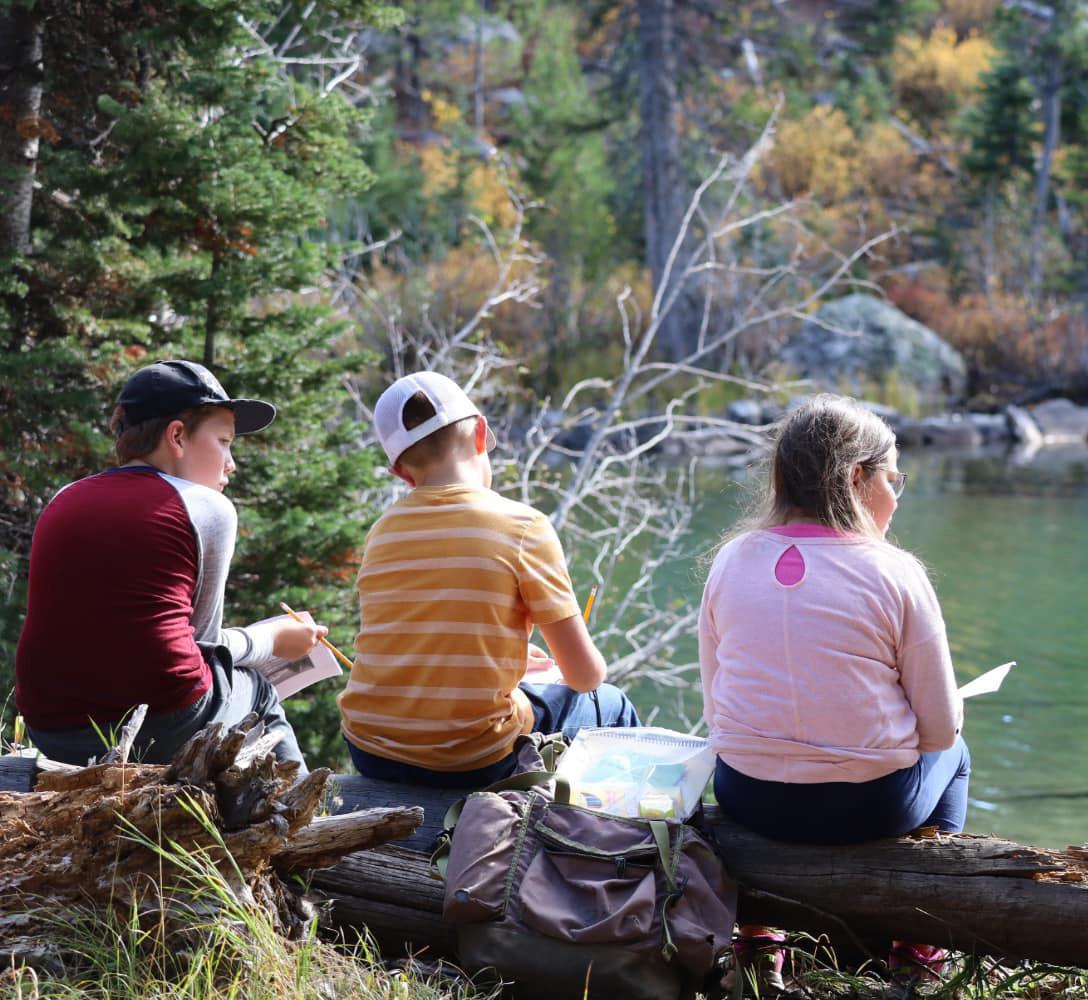 By Carlysle Price LIFESTYLES STAFF REPORTER
By Carlysle Price LIFESTYLES STAFF REPORTER
For the 33rd year, Edith Bowen Laboratory School, a unit of the Emma Eccles Jones College of Edu cation and Human Services, took its fifth-grade students to Teton Science School.
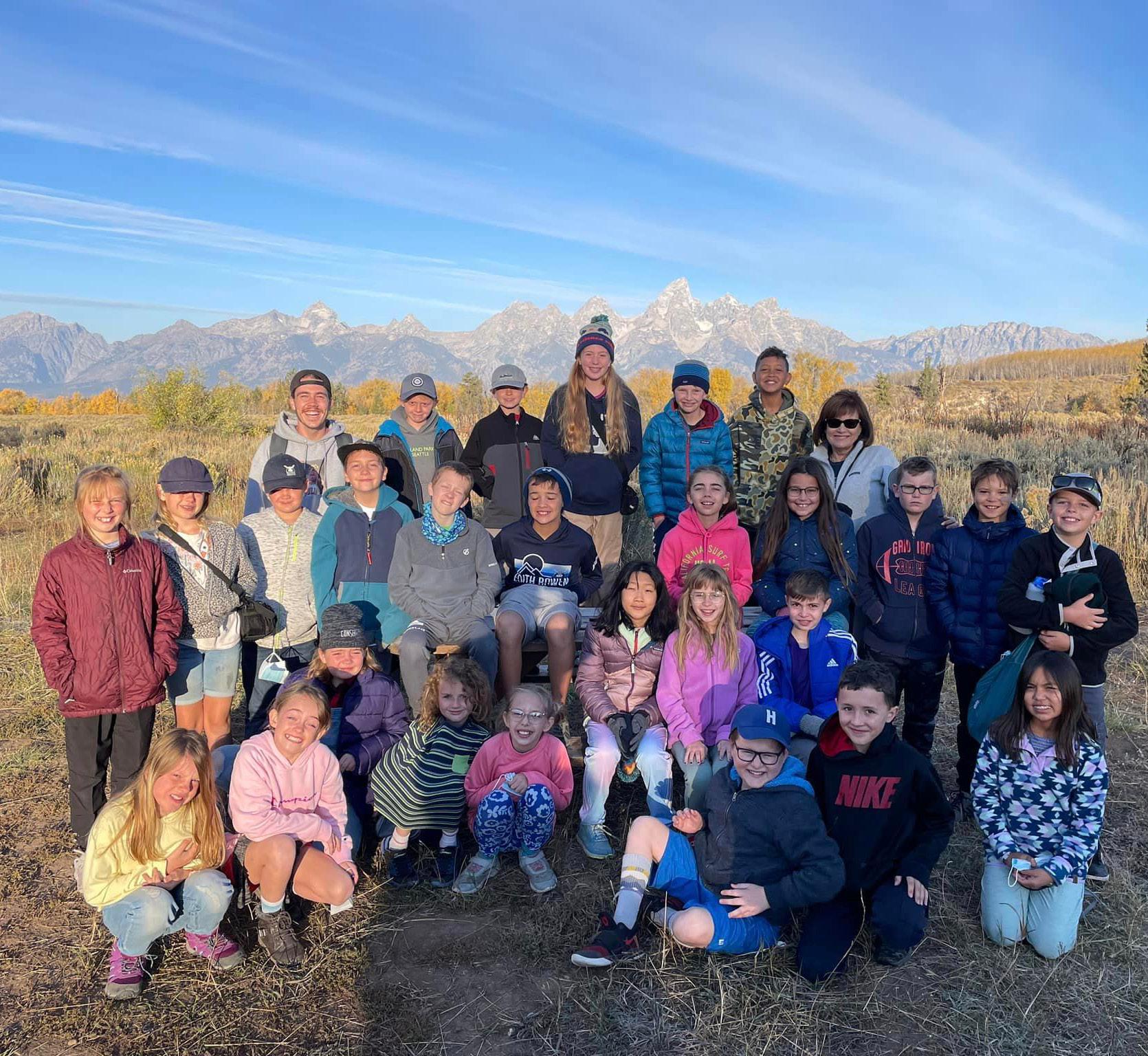
Headquartered in Jackson Hole, Wyoming, Teton Sci ence School focuses on science-based experiences and builds on past outings to expand skills.
According to Eric Newell, the director of experiential learning and technology at Edith Bowen, this tradition is a big part of the school’s culture.
“Our school is founded on what’s called a constructivist philosophy,” Newell said in an interview over the phone. “So our goal as a school is we are trying to provide stu dents with experiences that will enable them to learn the curriculum in ways that are meaningful to them.”
Newell said it’s Edith Bowen’s goal to put learners first and personalize their education to teach curriculum. This month’s trip has a heavy social studies emphasis as students learn about ancient civilizations.
Each outdoor experience is planned after coordinating with the teachers, and the curriculum is incorporated to create an appropriate learning opportunity for each grade.
For younger grades, programs stay smaller and more lo cal. Each year advances to bigger and newer challenges.
Younger grades are able to canoe twice a year at Little Bear and Bear Rivers, as well as explore local dams and
canyons. Sixth graders have the opportunity to do a three-day river rafting trip on the San Juan River.
Sadie West, the mother of a third and fifth grader at Edith Bowen, said her kids have gone canoeing in Cutler Marsh, seen salmon runs at Porcupine Reservoir, hiked to the top of Mount Naomi, gone ice fishing and done a bug lab at USU.
“I love the outdoor programs because they cross dis cipline with math, science, and literature,” West said over text. “I find that the students that come from Edith Bowen have great confidence. I think that comes from a lot of the leadership qualities they learn through outdoor programs.”
Newell said he also noticed this quality in students and credits it to getting kids outside of their comfort zones.
“I think it’s really important for them to learn from those experiences, push their boundaries, and that’s where you have tremendous amounts of growth that occurs in students,” Newell said.
Newell said that what Edith Bowen does could easily be done by any school if they were to prioritize their budgets differently.
Logan is a magical place, Newell said. He sees outdoor experiences as a point of reference for the rest of stu dents’ lives and works to educate them on their curricu lum as well as on the outdoor world.
“It brings joy into their lives,” Newell said. “I think if there isn’t joy in the learning process, then we have to ask ourselves, ‘What are we doing to the whole gener ation of children?’ They
need to have joy in their day.”
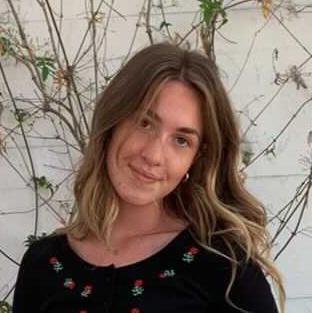
Edith Bowen can be found on Instagram @Edithbowen laboratoryschool or on Facebook @Edith Bowen Labora tory School.
Carlysle Price is proud of her extensive maga zine collection which has surpassed 50 editions, all of which have been read thoroughly. She would never skip to the cover story.
— A02311769@usu.edu
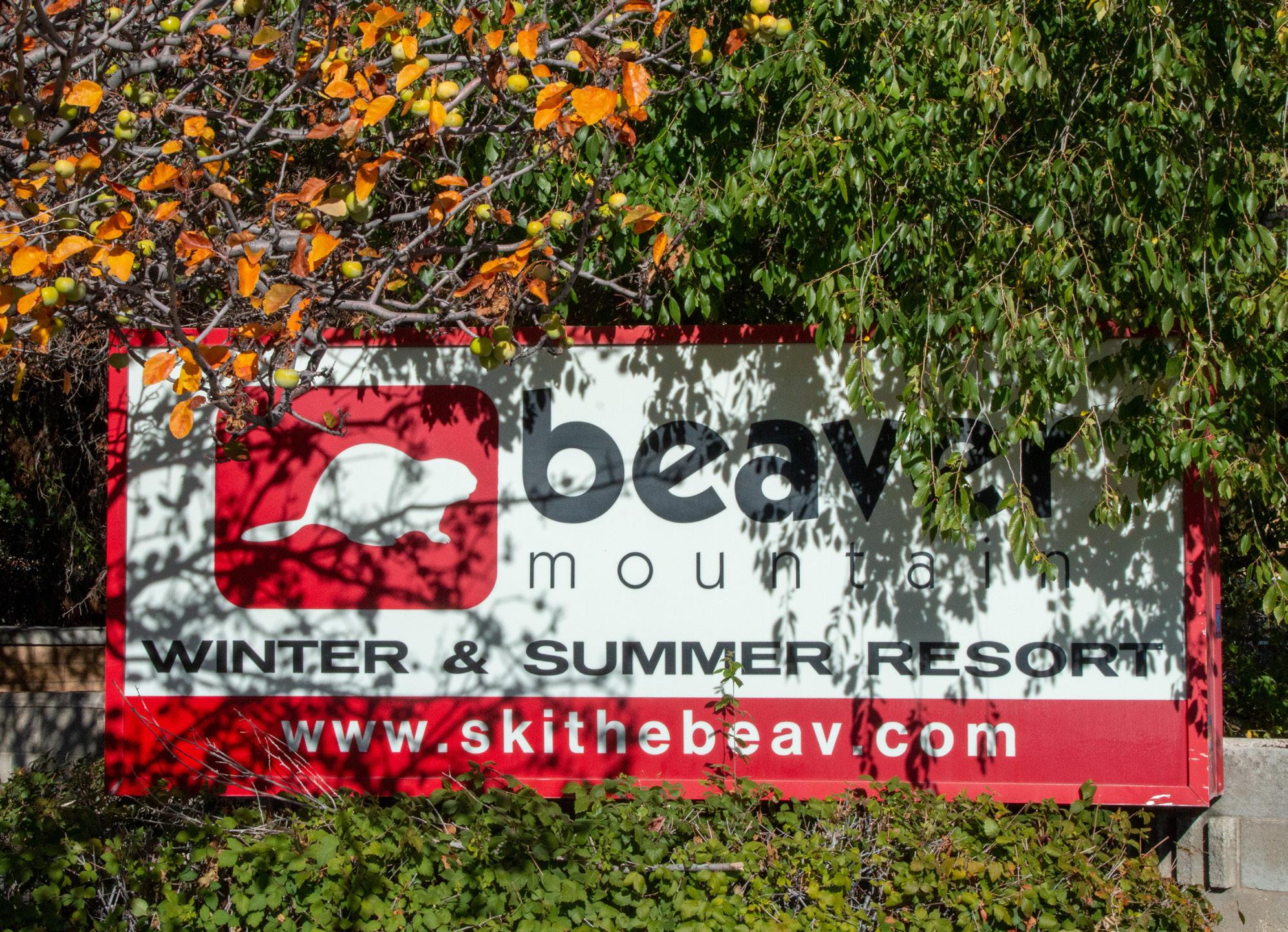 By Jillian Nelson LIFESTYLES STAFF REPORTER
By Jillian Nelson LIFESTYLES STAFF REPORTER
Outdoor Programs Rental Shop: located at the back of the ARC.
• Telemark Ski Package (Skis, boots, poles, skins)
Student Price: $19.50 for day use, $39 for weekend use.
• Alpine Ski Package (Skis, boots, poles)
Student Price: $13 for day use, $39 for weekend use.
• Snowboard Package (Board and boots)
Student Price: $13 for day use, $26 for weekend use.
Al’s Sporting Goods: located on 1075 N. Main St. in Logan
Ski and Snowboarding Packages
• Adult Season Rental Package: $129.99
• Adult Season Rental Package + Insurance: $144.99
Brighton Ski Resort:
• Base Season Pass: $999
• Unlimited Season Pass: $1,099
• Platinum Season Pass: $1,549
• Midweek Season Pass: $669 (Valid Monday-Fri day)
• Twilight Season Pass: $599 (2 p.m. to close)
Beaver Mountain Resort:
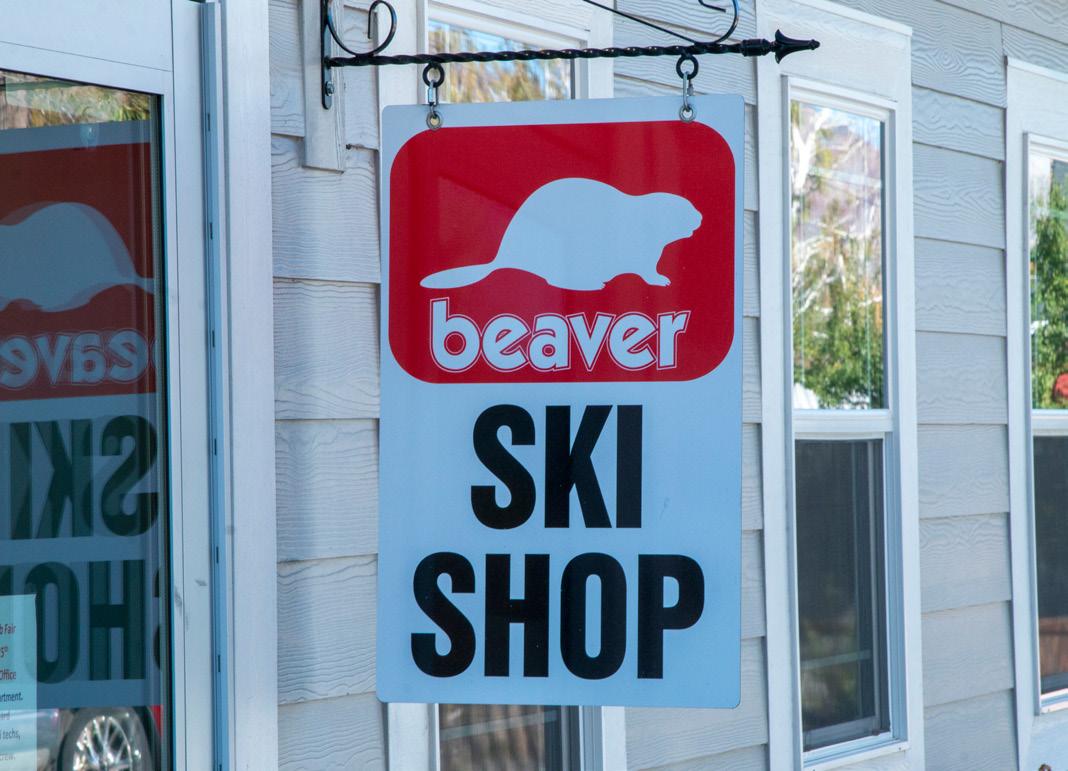
• Student Season Pass: $375 (Price valid until Nov. 15)
• Adult Season Pass: $600 (Ages 12-69)
Snowbasin Ski Resort: Ogden
• Premier Season Pass: $949
• Platinum Season Pass: $1,249
Powder Mountain Resort: Eden
• Loyalty Season Pass: $980
• Season Pass: $1,150
Nordic Valley Ski Resort: Eden
• Season Pass: $1,099
• Power Pass Select: $749
• Power Pass Core: $449
• Weekday Pass: $199 - $299
Salt Lake City Resorts: Alta Ski Area, Brighton Resort, Snowbird Ski and Summer Resort, Solitude Mountain Resort

Day Passes:
• 3-4 days: $150 /day
• 5-6 days: $147 /day
• 7-10 days: $143 /day
Cherry Peak Resort:
• Silver Student Pass: $209
• Gold Student Pass: $239
Park City Ski Resort:
• Epic Ski Pass: $85 /day
• Season Pass: $669
The Sportsman: located on 129 N. Main St. in Logan
Daily Rental Prices:
• Skis: $24+
• Snowboard: $24+
• XC Skis: $18
• Skate Skis: $22
• Snowshoes: $14
Season Rental Prices:
• Skis: $129+
• Snowboard: $129+
• XC Skis: $179+
• Skate Skis: $229+
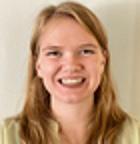
• Snowshoes: $99
Jillian Nelson is currently pursuing her degree in psychology and journalism. In her free time, she loves to read and watch the latest Marvel movies with her family and friends.






